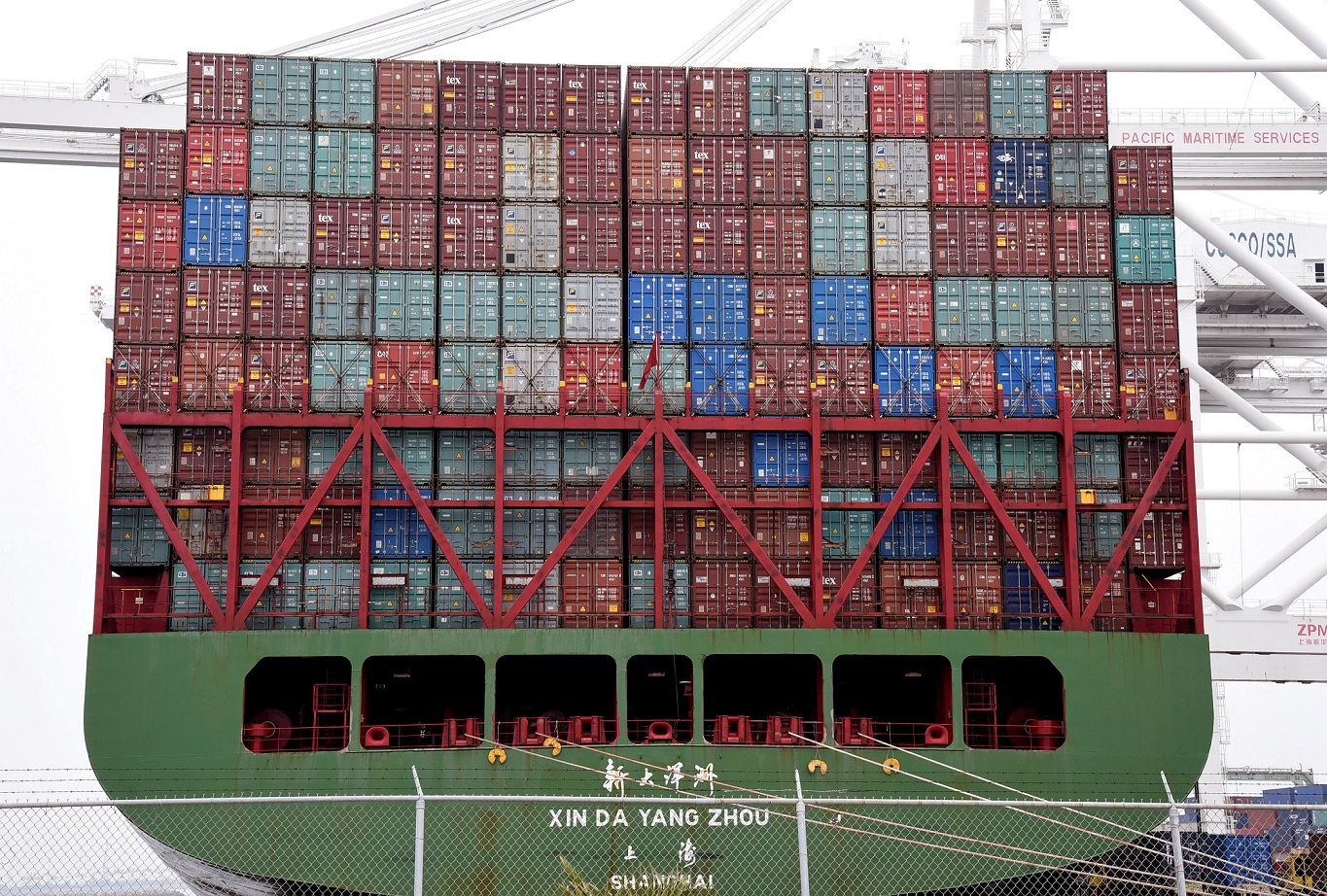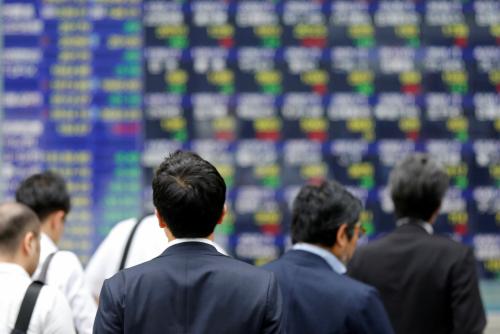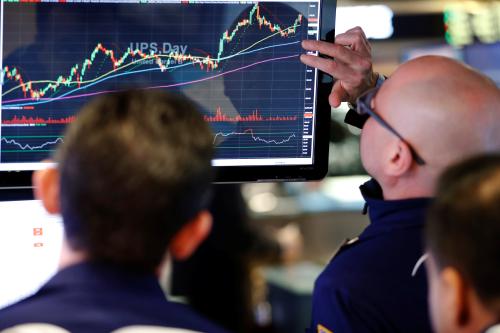In collaboration with the Financial Times (FT), Eswar Prasad and Karim Foda of Brookings have developed a set of composite indexes which track the global economic recovery. The Tracking Indexes for the Global Economic Recovery (TIGER) is also featured in the Financial Times. A version of the commentary also appears in the Nikkei Asian Review.
The world economy’s growth momentum remains strong but is leveling off as the winds of trade war, geopolitical risks, domestic political fractures, and debt-related risks loom, with financial markets already reflecting mounting vulnerabilities. The latest update of the Brookings-Financial Times TIGER index provides grounds for optimism about the current state of the world economy matched by some pessimism about the sustainability of the growth momentum.
Among advanced economies, the pace of growth has moderated slightly in 2018. Investment and productivity growth improved last year, but gains in employment and wages remains modest in many of these economies. After a good start at the beginning of the year, equity and bond markets in the advanced economies took a sharp hit but appear to have stabilized.
The U.S. economy remains in robust shape, with growth in GDP, industrial production, and investment holding up well. In tandem with strong consumer confidence and employment growth, wage and inflationary pressures have picked up slightly, although less than would be typical at this stage of the cycle. The U.S. is engaged in a perilous macroeconomic experiment, with the injection of a significant fiscal stimulus even as the economy appears to be operating at or above its potential. The Fed is likely to lean hard against potential inflationary pressures as this stimulus plays out. Export growth has been buoyed by a weak dollar and strong external demand, but the U.S. trade deficit has still risen over the past year. The large bilateral trade deficit with China remains a flashpoint, setting in motion trade tensions that could have implications for China, the U.S., and the entire world economy.
Click a country name below the Composite Index to view charts for the main TIGER indexes by country and charts for the indicators that make up the indexes, which are broken down by real activity, financial, and confidence indicators for advanced economies and emerging markets.
In 2017, the Euro zone turned in its fastest pace of growth over the last decade. Growth in overall GDP as well as in the manufacturing and services sectors remains solid but has cooled off slightly this year. Centrifugal political forces in many countries, rising global trade frictions, and the withdrawal of monetary stimulus could lay bare some of the unresolved structural problems and tensions in the zone.
The U.K. continues to lag other European economies in terms of GDP growth. A weak pound sterling and strong demand from trading partners have resulted in a good growth contribution from net exports. Uncertainties fueled by messy Brexit negotiations are likely to remain a drag on investment and GDP growth. The Japanese economy, which is in the midst of a long and mostly steady expansion, continues to perform well but is facing a slowdown in domestic demand growth as wage growth eases and trade frictions rise.
Emerging markets contributed to the broad-based and synchronized global upturn last year and many are on track to turn in an even better growth performance in 2018. Emerging Asian economies have benefitted from strong growth in both domestic demand and exports. However, many emerging markets remain vulnerable to capital flow reversals, particularly if the G-3 central banks were all to tighten their monetary policy stances this year, as well as disruptions to international trade flows.
China’s growth remains robust and well balanced across sectors and across categories of domestic demand. President Xi Jinping has locked in his political power, put in place a team of experienced and reform-minded officials to guide economic policy, and hinted at major economic and financial reforms. The key challenge for China is the execution of proposed reforms not just to the financial system but also to other parts of the economy, especially the state-owned enterprises. The direct effects of an all-out trade war with the U.S. would at worst be a temporary and modest knock on Chinese and global growth, but there could be longer-term repercussions on the global trading system.
India remains the fastest growing major economy. Resurgent investment and labor productivity, and manufacturing sector expansion have improved the composition of growth. India is reasonably well insulated from global trade and financial shocks, although its financial system remains a weak link that will continue to restrain growth.
Brazil and Russia have recovered from their recent recessions, but both economies continue to record only modest growth and remain vulnerable to domestic and external shocks. In Brazil, despite domestic political turmoil, employment growth has held up well, and so have consumer and business confidence. Both economies have experienced good export growth.
The era of growth fueled by macroeconomic stimulus, with no apparent adverse side effects such as high inflation, appears to be drawing to an end. In the absence of deep-rooted reforms to improve productivity, it will be difficult to ratchet up or even sustain high growth in the major economies.
Mounting public debt in the U.S. and other advanced economies, compounded by unfavorable demographics, and rising external debt levels of some emerging market economies are risk factors that also reduce policy space for responding to shocks. Any of the multitude of risks on the horizon could derail growth if policymakers count on momentum continuing without additional measures to increase their economies’ resilience.







